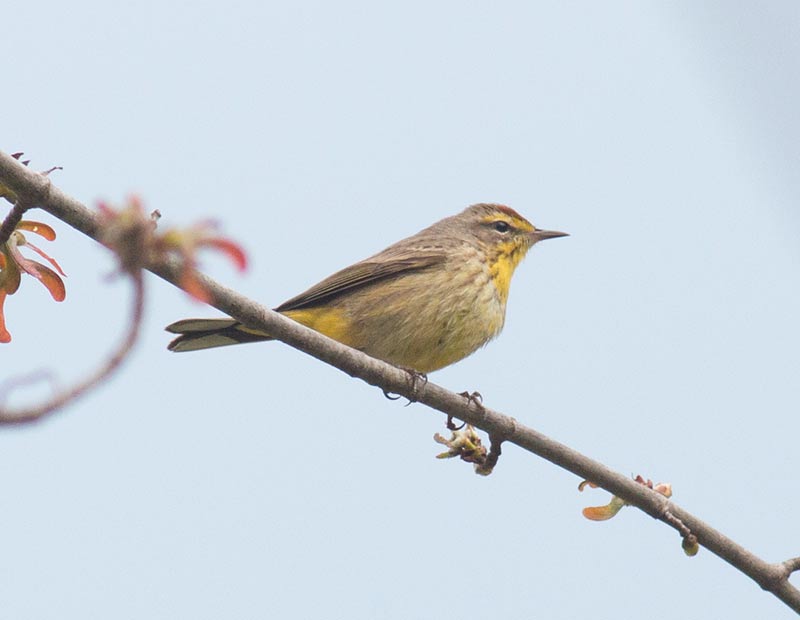Palm Warbler
4/17/16
By David Brown
Last week I was birding with my family at Canfield Island in Loyalsock Township. As we emerged from one of the wooded areas I spotted a small bird perched on a branch and wagging its tail. My first thought was that it was probably an eastern phoebe, a species of flycatcher which shows similar behavior and is common in that type of habitat. However, when I got my binoculars on it, I discovered that it was a palm warbler, my first one of the year.

Palm Warbler (western)
The palm warbler is easy to identify based on its distinctive plumage and behavior. They are the typical warbler size with a length of around 5.5 inches and a wingspan of about 8 inches. In spring breeding plumage the top of the head is bright rufous and they have a dark eye-line. The throat and upper-breast is yellow. There are two subspecies. On the yellow subspecies the entire breast and belly is yellow with rufous streaking, whereas the western subspecies is a dull white underneath. Both subspecies migrate through our area but western is more common than yellow. The one we saw was indeed from the western subspecies.
Many warbler species have brightly-colored males and duller females, but male and female palm warblers look alike. The song of the palm warbler is a slow, buzzy trill. Many other species also sing a trill, such as chipping sparrow, dark-eyed junco, swamp sparrow, pine warbler, and worm-eating warbler, so be careful in identifying these species by sound alone.
Palm warblers primarily eat insects but will also eat seeds and fruit. They also forage on the ground, a behavior you would generally expect from a sparrow rather than a warbler.
Palm warblers primarily nest in Canada in bogs and forest edge habitat near water. They spend the winter in the southern United States, the Caribbean and parts of Central America. In all seasons they prefer an open habitat with scattered trees.
Palm warblers do not nest or winter in Pennsylvania so we only see them during migration. They migrate north through our area from early-April through mid-May making them one of the earliest migrant warblers to show up. During fall migration they head south through our area from mid-September to mid-October. Some local spots you can find palm warblers are Rose Valley Lake and Canfield Island, but this species is common enough that you can find them in suitable habitat throughout the region, perhaps even in your own backyard.
The palm warbler is poorly named and has no strong connection to palm trees. In 2011, the scientific name was changed to Setophaga palmarum when the wood-warblers were regrouped by genus based on new genetic studies. It was formerly in the Dendroica genus.
Spring migration continues to pick up and the next few months are the peak of bird activity in our area so watch and listen for birds as you enjoy the spring weather. Consider joining the Lycoming Audubon Society on one of our local bird walks. If you don't have binoculars, we have pairs available to borrow at each event. Good birding!